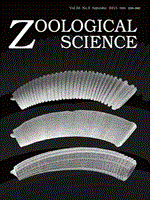This study presents the first light microscopy-based description of the cloacal anatomy of male Carpathian newts (Lissotriton montandoni). This European newt species hybridizes with its sister species, the smooth newt (L. vulgaris), despite a high level of prezygotic isolation. The goal of the study was to ascertain possible anatomical differences in cloacal anatomy, especially pheromone and spermatophore producing glands, which might potentially affect reproductive isolation between L. montandoni and L. vulgaris. The cloaca of L. montandoni males consists of the cloacal tube, cloacal chamber, pseudopenis, and aggregations of cloacal glands. Four main types of cloacal glands were recognized. Pheromone-producing dorsal glands are of two types due to differences in their secretory epithelium: cuboidal and high prismatic. The remaining glands: ventral, pelvic, and Kingsbury's glands, are most likely involved in the synthesis of spermatophore components. Two distinct groups of ventral glands were identified: posterior and anterior ventral glands. In comparison with L. vulgaris, no evident differences were found that could potentially affect courtship pheromone synthesis by dorsal glands or the base and the cap of the spermatophore produced by the remaining cloacal glands.
How to translate text using browser tools
1 September 2013
Cloacal Anatomy of the Male Carpathian Newt, Lissotriton montandoni (Amphibia, Salamandridae), in the Breeding Season
Artur Osikowski,
Karolina Cierniak-Zuzia
ACCESS THE FULL ARTICLE

Zoological Science
Vol. 30 • No. 9
September 2013
Vol. 30 • No. 9
September 2013
cloaca
cloacal glands
Lissotriton
newts
reproduction




